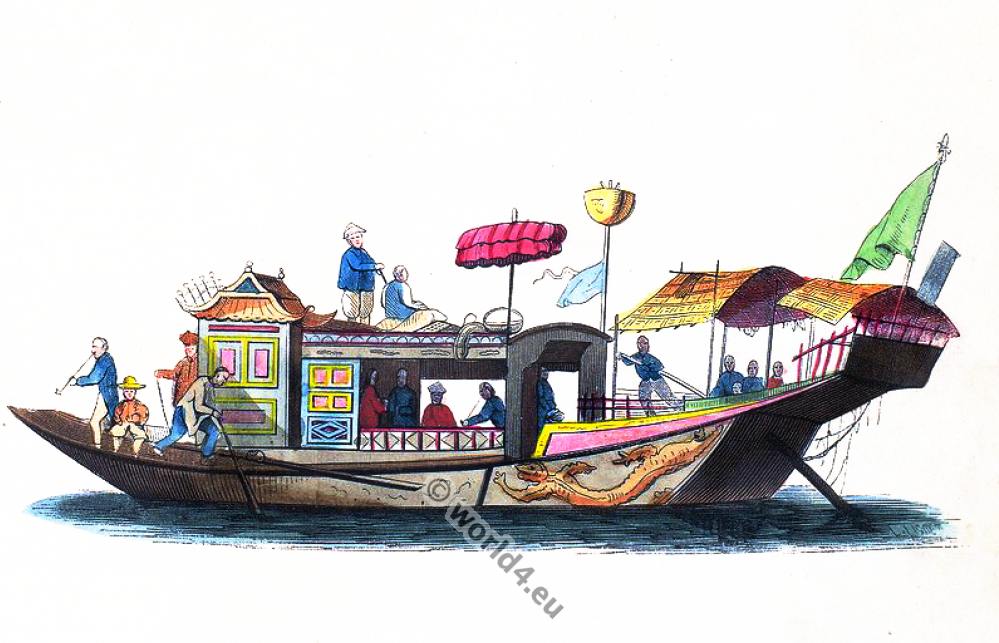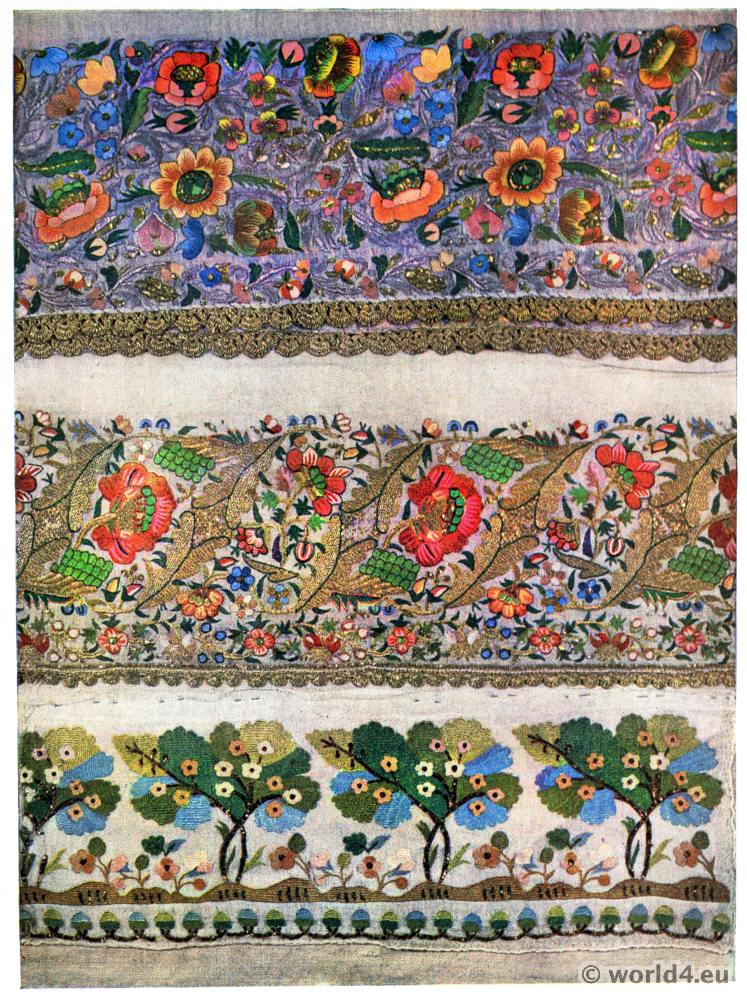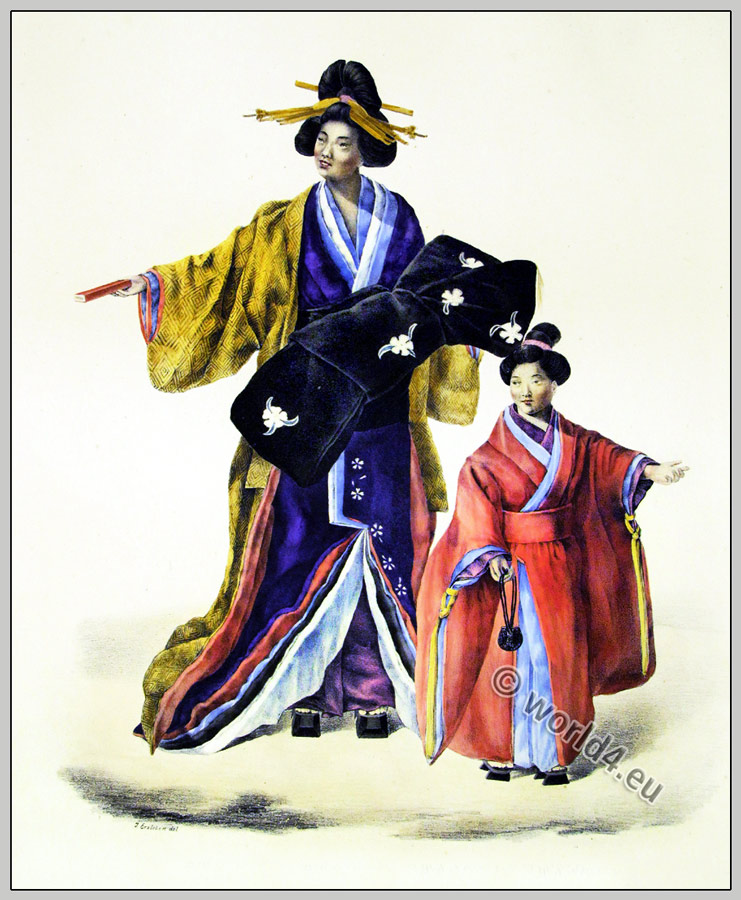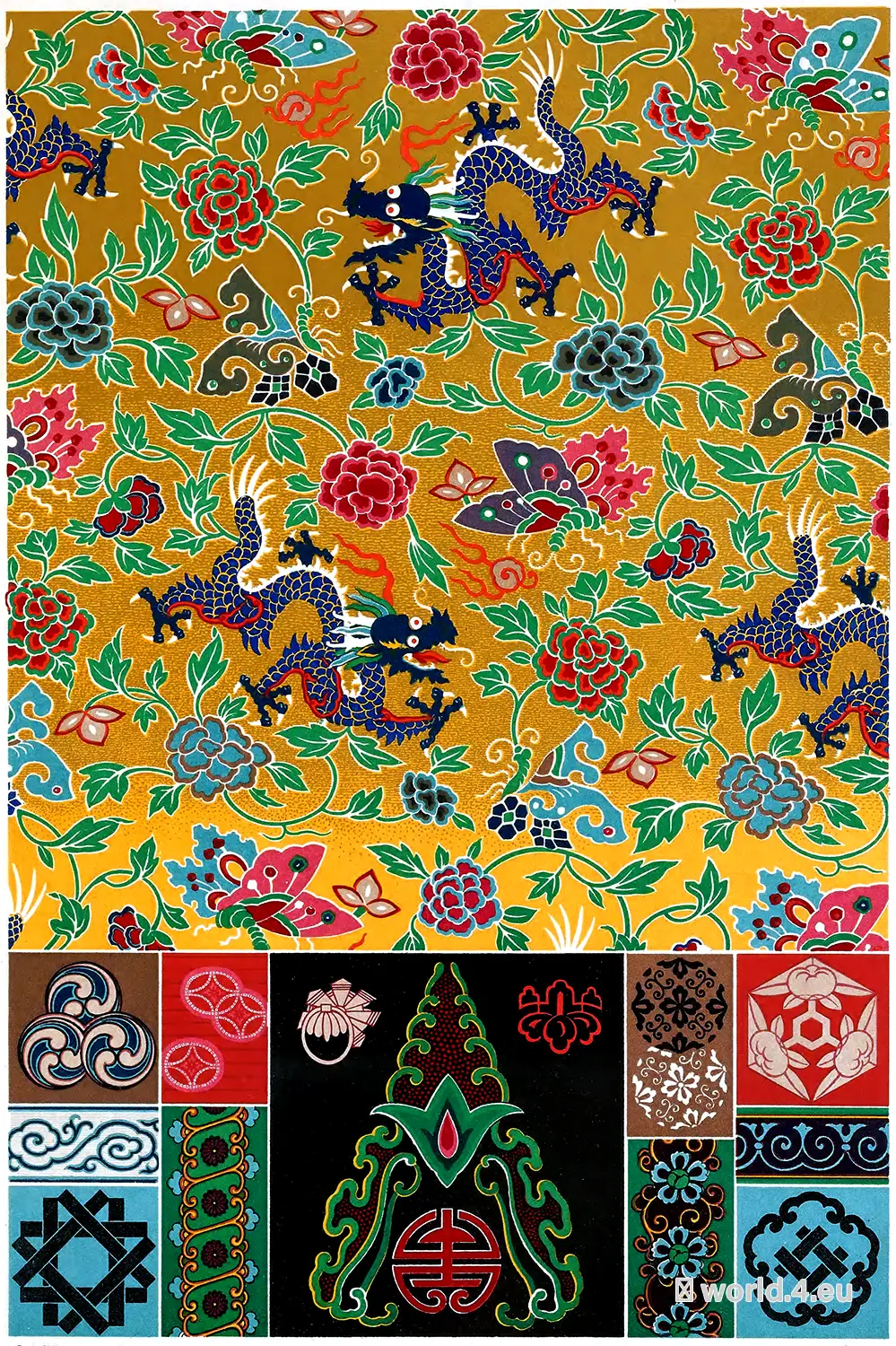
PLATE XIII.
CHINESE AND JAPANESE ART.
SILKS AND FLOWING PATTERNS.
THE piece of silk, the representation of which occupies the larger portion of our plate, is one of the finest examples of the decoration of woven fabrics that it is possible to study.
Yellow – the colour which Ziegler calls the “eldest daughter of light” – forms the ground: it is the livery of the reigning dynasty of the Tai-thsing (Qing dynasty) in China. The dragons with four claws which ornament it would at once indicate to the Chinese the rank of the person for whom it was destined.
“The emperor.” says M. Jacquemart (Merveilles de la céramique), “his sons, and the princes of the first and second rank, take as their symbol a dragon with five claws The princes or the third and fourth rank have the same dragon with four claws; whilst those of the fifth rank and the mandarins have for their emblem merely a serpent with four claws, called Mang.”
It may be noticed in this fabric that the effect is obtained, not by gradations of tints, but by strong contrasts of colours, and that the white separating outlines enable the eye at once to grasp the design.
These outlines are so narrow as to be tinged by the neighbouring colours, with the exception of those surrounding the dragons, which are wider, and consequently more intense and luminous; they seem as it were, to create an atmosphere in which the monsters move.
We have endeavoured, by graduating the tint of the ground, to imitate the play of the silky fabric under the action of light.
This piece of silk covers a Chinese book in the Cabinet des Estampes of the Bibliothèque Nationale.
The specimen on a black ground in the lower part of the plate is Chinese; the small ones on the same ground on ether side of It and all the others are Japanese.
See: The dragon in Asian art and culture.
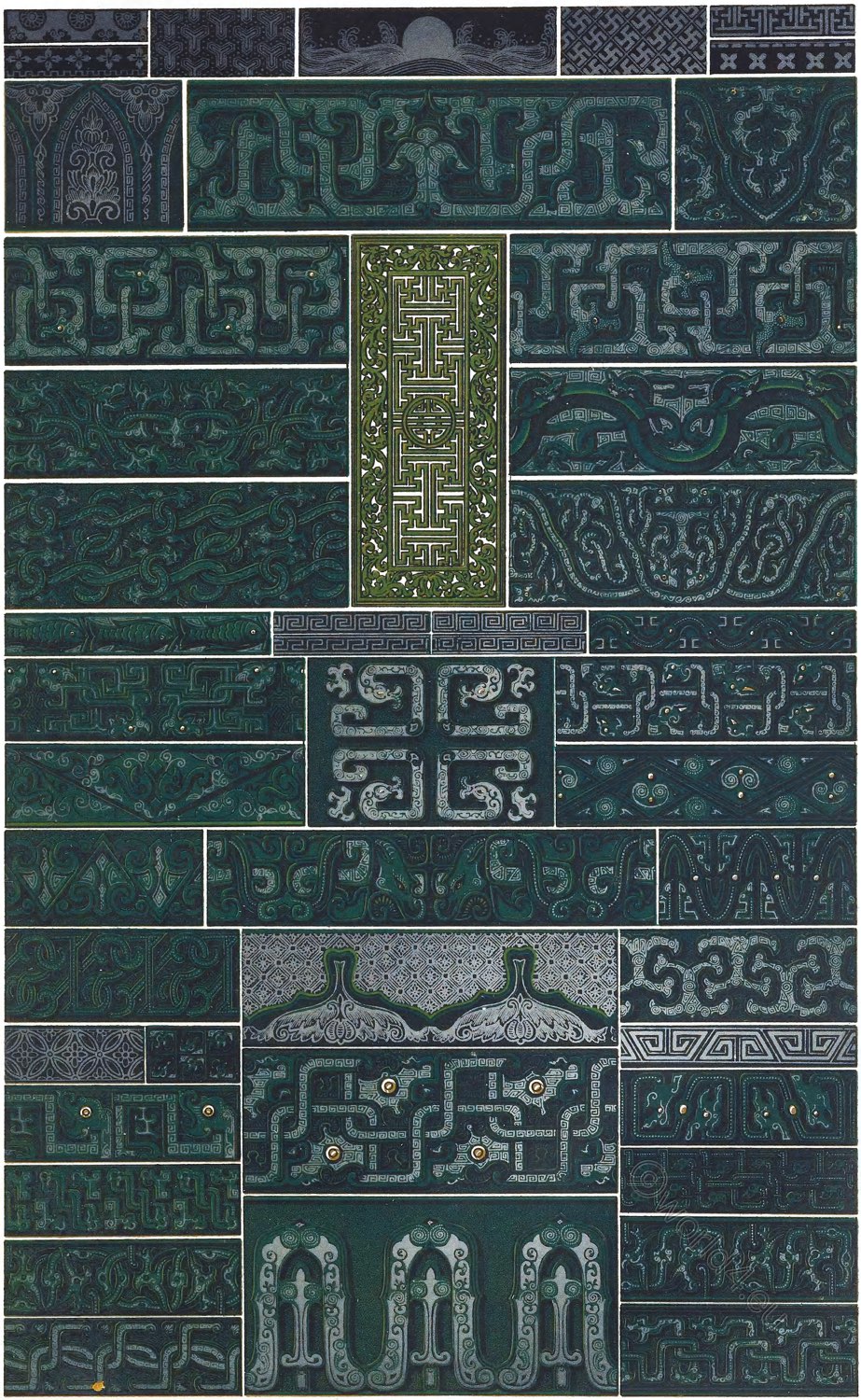
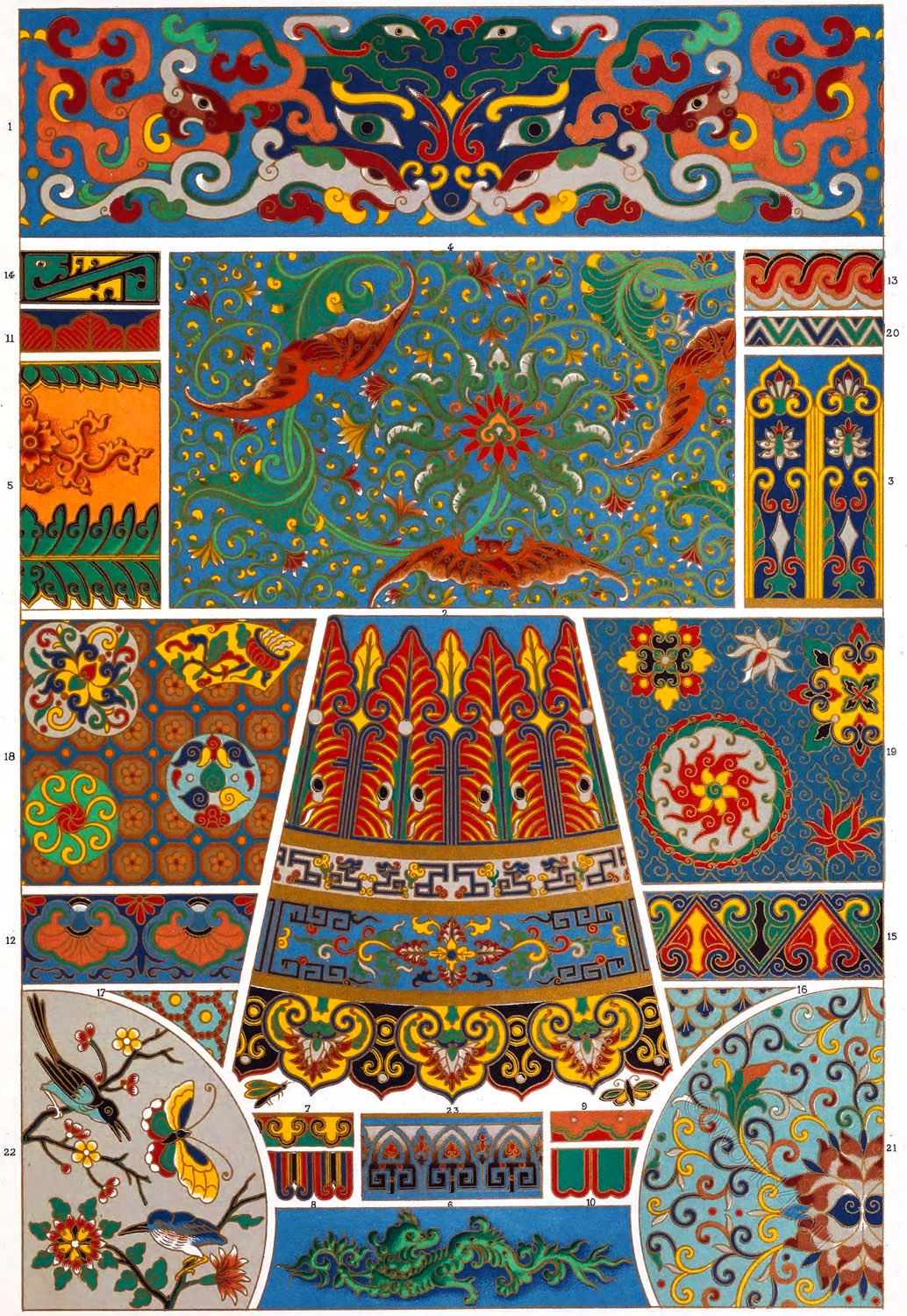
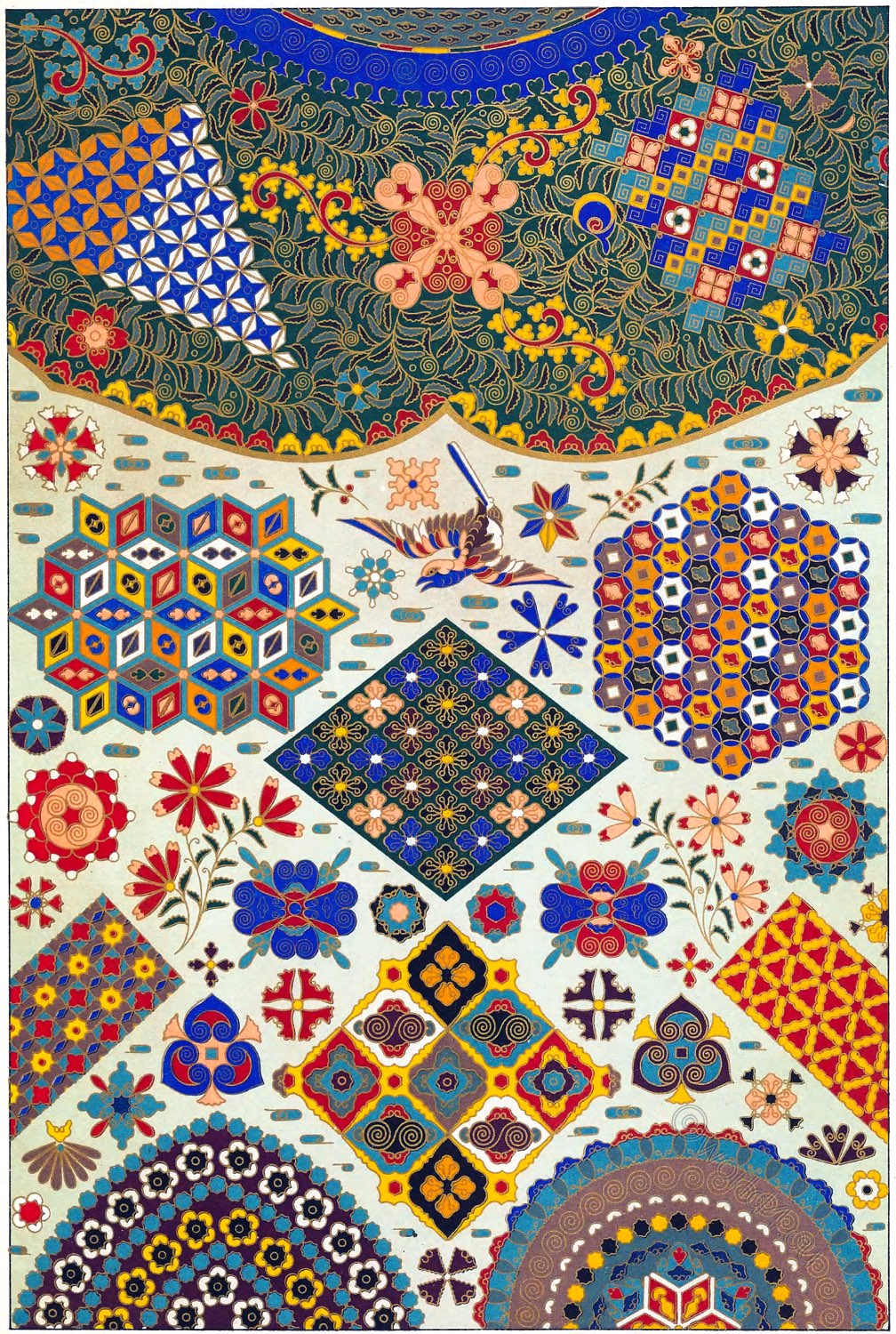

Source: Polychromatic ornament by Auguste Racinet. London, H. Sotheran and Co., 1877.

